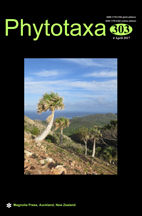Abstract
Stipa ×fallax nothosp. nov. (Poaceae), from western Pamir Alai Mts (Tajikistan), is described and illustrated. Field observation, numerical analyses of morphology, and pollen grain viability data show that it originated from hybridization between S. drobovii and S. macroglossa subsp. macroglossa, species representing sections Smirnovia and Stipa, respectively. Stipa ×fallax is morphologically close to S. ×alaica and S. ×hissarica, but is distinguished by its shortly pilose lower part of the awn and densely pubescent leaves. Characters distinguishing S. ×fallax from its parental species as well as similar hybrid taxa in section Smirnovia that also grow in Central Asia are presented. The micromorphology of lemmas and leaves of S. ×fallax and its parental species was examined by scanning electron microscopy. We also propose the new combination Stipa drobovii var. iskanderkulica (Tzvelev) M.Nobis & A.Nowak.

